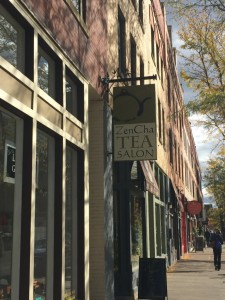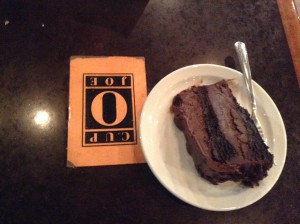One Line Coffee
I went to One Line Coffee on a Sunday morning in search of a place to escape and be productive. I found what I was looking for. The place was modern and had amazing old music playing that made me feel pumped to do work. Its modern feel made me feel relaxed and comfortable. I ordered a chai tea latte, my favorite drink, and sat down to do my work. One Line Coffee only provided an hour of free wifi, a downfall for the customers but a smart business move due to its smaller size. The chai latte was not the best one that I have had before. It was entirely cream and left me thirsty after drinking it. Though it lacked in quality drinks it definitely made up for it overall. I learned that the environment of a place can go a long way. I would recommend it as a place to catch up, though I would not recommend the chai tea latte.

Mission Coffee
I went to Mission Coffee on a Sunday afternoon looking for some a good chai latte and a place to get some Calculus homework done. The atmosphere was relaxing and comfortable. The chai tea was good, but not amazing. The medium size only came in a paper cup, though a larger size mug was offered as a more expensive option. The place was a little busy and loud so getting work done was difficult at times. The wifi was having difficulties when I was there so I had to do homework offline. I would recommend Mission coffee to anyone who is not easily distracted or is looking for a place to catch up with a friend after a long day.

ZenCha Tea Salon
I went to ZenCha Tea Salon with Chase Egner and Katie Quinlin. I ordered a lavender tea latte and really enjoyed it. It is a little bit of a pricey option but for tea-lovers, it is worth it. I would recommend this place to a fellow tea-lover. I learned that there is a lot of effort that goes into making loose leaf tea versus bagged tea. The atmosphere was really calming and the tea definitely helped.

Cup O Joe
I went to Cup O Joe with Sam Myer. I ordered a chocolate cake and a chai latte. Though the chai latte wasn’t amazing, the chocolate cake was really good. The price was affordable for both the cake and the chai latte. The atmosphere was warm and cozy. I would recommend this place to a friend who was looking for a nice cozy place to hang out with a friend or get some work done. My favorite things were the inviting fireplace and wall decorations of old newspapers. The cup was paper, detracting from the overall appeal of the place. I learned that coffee shops can have really good food even if their coffee is average.

Overall
My favorite coffee place was Cup O Joe for its atmosphere and food, but Impero for its chai tea latte. I learned how to navigate Columbus during this assignment. I want to explore the neighborhoods, shops and parks of Columbus next. I passed a few on my mission to discover coffee places and they looked interesting. I also talked to a few people who did other lists and they discovered interesting places that sounded intriguing to me. I recommend mapping out where the coffee shops are before trying to go to them.





